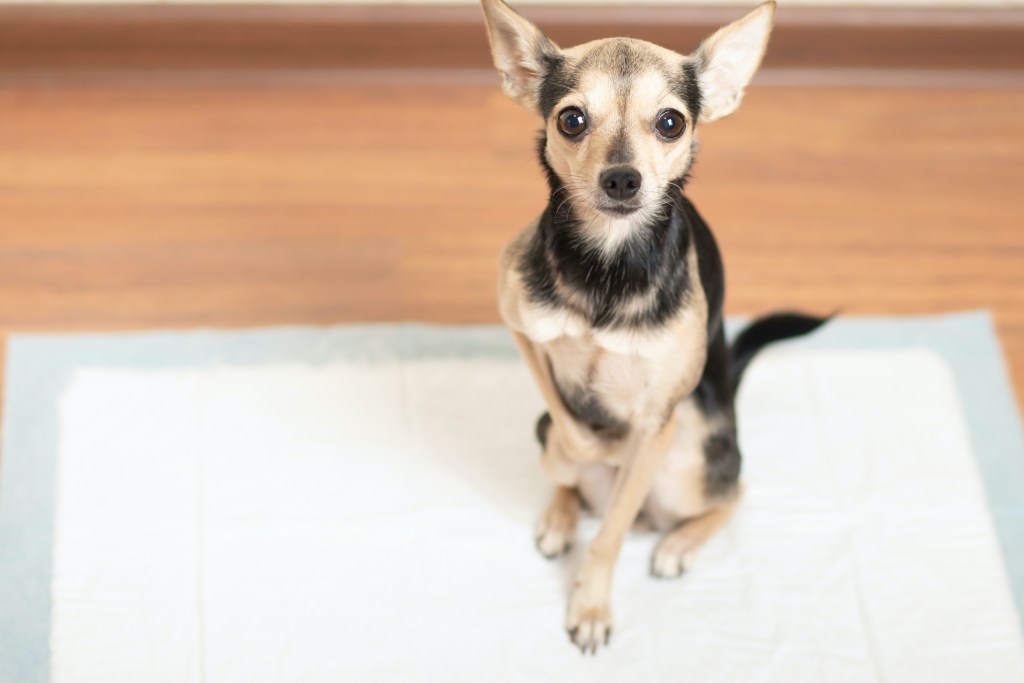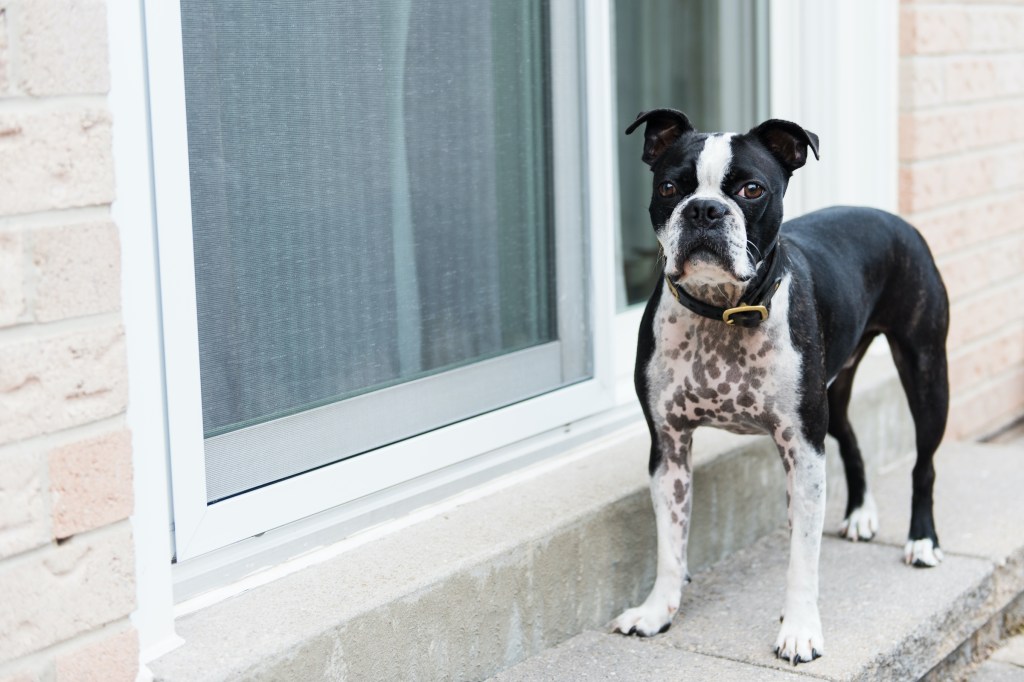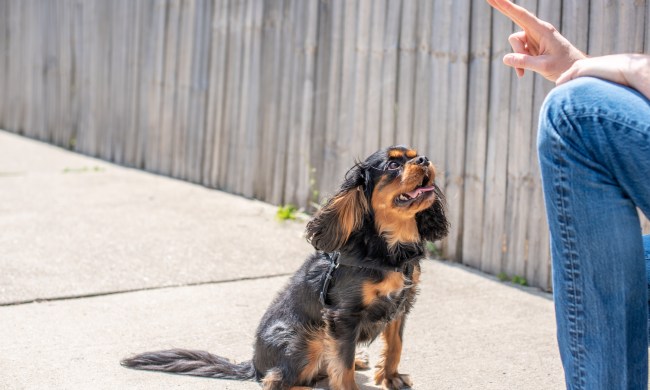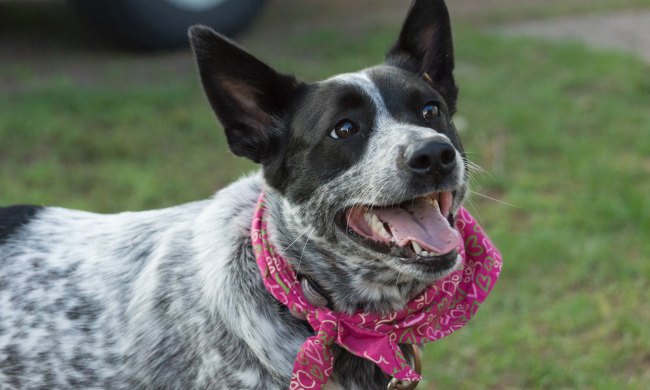Bringing home a new furry family member means lots of snuggles, playtime … and cleaning. Especially with puppies, messes and accidents happen! It may not be the most glamorous job, but picking up after your pet is a vital part of dog ownership, no matter how old your canine is. Rest assured, though, this chaos won’t last forever.
By learning how long it takes to potty train a puppy, you can set realistic expectations and create a plan that will work for you and your new friend. This will allow you to look at the larger picture and the bigger goal, instead of getting caught up in small successes and mistakes. Progress is not linear, so it can be tricky to remember that an accident isn’t necessarily a step back. With enough time and consistency, you’ve got this! And with these tips, you can make the process even easier.
How long does it take to potty train a dog?
Before looking for a one-size-fits-all answer, it’s important to understand that no two pups react to potty training the same way. What might make perfect sense to one dog can be confusing or even scary to another, so you should always approach new steps with patience.
There are many factors that determine how long it takes to potty train a dog, as noted by Dr. Marty Goldstein, including:
- Medical issues
- Age of dog
- Schedule consistency
- Dog-owner relationship
- Level of supervision
- Stress levels
- The environment where the dog grow up
- Dog size
- Owner’s reaction to accidents
Overall, there is no one timeline for successful potty training. If you’re able to dedicate every hour of every day to their training, you may find them getting the hang of it a bit faster, but it will still take some time regardless. VCA Hospitals notes that most dogs will be ready for more freedom after 8-12 weeks. Luckily, there’s a lot you can do to make this process as smooth and quick as can be.

Potty training puppies versus adult dogs
You’re likely familiar with the old saying “you can’t teach an old dog new tricks,” but the truth is that any dog can learn a new skill, even potty training. Whether old or young, any pup has the potential to understand and execute ideal bathroom behaviors, but physical and mental changes due to age can make potty training more challenging.
When it comes to puppies, starting training early is ideal. It’s worth noting, though, that young pups don’t have full bladder control until 4-5 months of age, according to Dr. Marty Pets, so you’ll likely need to take more frequent potty breaks at first. This is just another reason why it’s ideal to stay home with your furry friend while they get used to their new home. And remember—accidents aren’t the end of the world!
Since you’ll inevitably have to leave your new dog home alone at some point, it’s also important to have a plan for when you’re not supervising. For many pups, staying in a smaller, enclosed space while you’re gone will discourage accidents (you wouldn’t want to stand in your own urine, would you?), but you also need to know how long your dog is able to hold it.
The American Kennel Club recommends following the month-plus-one rule. “Take the age of your puppy in months and add one, and that is the maximum number of hours that your puppy should be able to comfortably hold it between potty breaks.” For example, a two-month-old puppy could be accident-free for up to three hours, while a six-month-old could be fine for up to seven hours.
Smaller and younger pups also digest a lot more quickly due to their tiny size, so they may need to use the bathroom as soon as 5 minutes after eating. You can prevent accidents by preemptively taking your dog outside—they’ll pick up on the routine before you know it.

Tips for potty training your puppy
To help make potty training as quick and painless as can be, you should spend as much time as you can bonding—and training—with your pup. Start potty training on day one by taking bathroom breaks every half hour to hour, using a verbal cue like “let’s go potty” or “do your business” to help them make a mental association.
By creating a consistent schedule for potty breaks, your dog can avoid accidents altogether. After all, a pup can’t pee in the house if they don’t need to go at all. Make sure to use positive reinforcement when your puppy does their business in the right spot, as according to the AKC, this will both motivate them and help them remember what to do next time.
No matter how old your new pal is, potty training them is not only possible but rewarding, too. It can take some time to master, but everyone in your home will love having a clean space and a happy dog. Working together on this process will help you bond with your pup while also helping them learn, so there’s no reason to wait.



